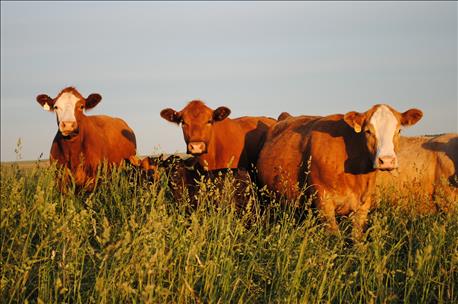
We hear plenty about drought and water shortages causing problems for irrigators and crop producers. In Nebraska, irrigation and ample groundwater supplies in much of the state are the reasons we can raise a crop, even in extreme drought. However, we all know that there are limits to this system and that efficiencies in irrigation and water management are key to the future of the system.

AMPLE WATER, AMPLE GRASS: But under dry, arid conditions, water is a limiting factor.
We don’t talk as much about the impact of drought, drier than normal weather and the lack of water on grazing lands. I recently attended a stop along the Jim Gerrish Winter Road Show through South Dakota, when the former University of Missouri researcher stopped in Yankton. At the meeting, Gerrish noted that it has been years since he left UM and moved into a grazing operation in Idaho. He told the audience that he learned about as much that first year grazing in Idaho as he did in all of his years in research. Why did he say that? Because today, he is grazing under arid, dry or drought conditions, so water is a key resource that has to be constantly and consistently managed with extreme care.
Gerrish noted that grazing managers are in the photosynthesis business, utilizing the earth as a big solar panel to collect sunlight, combined with water, soil and microbes and air to produce grass. If you think about grazing and grass management in that way, you start to recognize that in dry climates, balancing grazing, grass management and the water cycle are the components that build success or cause failure.
Related: Graze for 365 days
I thought it was telling when Gerrish said that not making a decision to do something in grazing management is actually making a decision. He focused a lot of his time talking about decision making, balancing important components in the system and the cattle. Basically, he encouraged managers to be proactive in their approach to handling water and grass and soil. “If you let the cows make the business decisions for you, you won’t be in business long,” Gerrish said. Words of grazing wisdom from someone who has seen the research and production side of grass management.
Be sure to follow us on Facebook and get the latest local farm news at Nebraska Farmer online.
Bonus: Looking back and looking forward: Grazing through the years
About the Author(s)
You May Also Like






